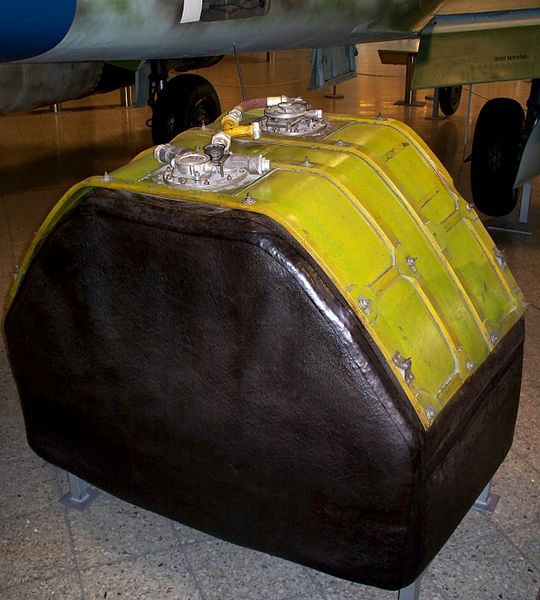Aircraft fuel tanks are a major component of aircraft fuel systems. They can be classified into internal or external fuel tanks and can be further classified by method of construction or intended use. Safety aspects of aircraft fuel tanks were examined during the investigation of the 1996 TWA Flight 800 in-flight explosion accident.
Self-sealing fuel tank of a Messerschmitt Me 262 on display at the Deutsches Museum, Munich
F-4E Phantom carrying two underwing pylon tanks and a centreline tank
Trans World Airlines Flight 800 (TWA800) was a Boeing 747-100 that exploded and crashed into the Atlantic Ocean near East Moriches, New York, on July 17, 1996, at approximately 8:31 p.m. EDT, 12 minutes after takeoff from John F. Kennedy International Airport, on a scheduled international passenger flight to Rome with a stopover in Paris. All 230 people on board died in the crash; it is the third-deadliest aviation accident in U.S. history. Accident investigators from the National Transportation Safety Board (NTSB) traveled to the scene, arriving the following morning amid speculation that a terrorist attack was the cause of the crash.
The reconstructed wreckage of TWA 800, stored by the NTSB at Calverton Executive Airpark
N93119, the aircraft involved in the accident, in May 1995.
The close-up view of N93119's front fuselage, in 1972, showing the seven plugged windows on the upper deck. These plugs were blown out following the explosion of Flight 800.
Burning wreckage of Flight 800 on the surface of the Atlantic Ocean






